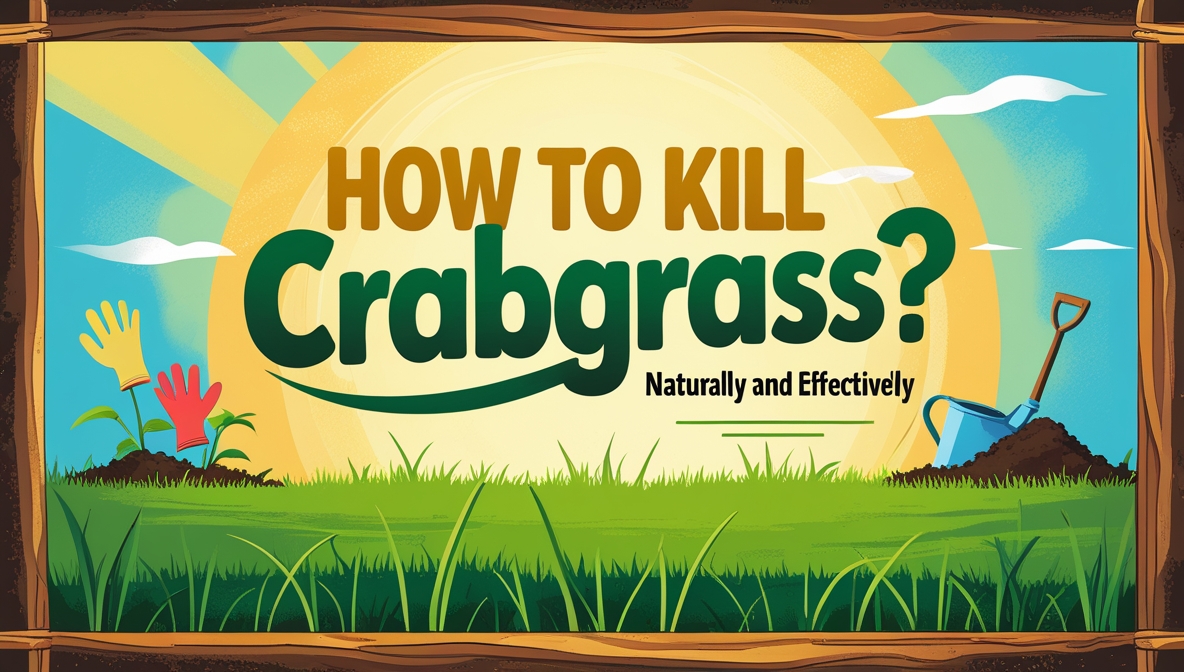Crabgrass. That pesky, relentless weed that seems to pop up in your lawn like a mischievous little sprite. It’s a common enemy, but with the right knowledge and tools, you can conquer it. This guide breaks down how to effectively target this tenacious turf intruder, from recognizing its sneaky tactics to utilizing the best weapons in your garden arsenal.
Contents
Crabgrass: The Enemy
Crabgrass is a frustratingly adaptable weed. It thrives in disturbed soil, loves the sun, and can quickly spread, making it a persistent problem for many homeowners. Unlike some other weeds, crabgrass is more than just an eyesore; it can outcompete your desired lawn grass, reducing its health and beauty. This makes controlling its presence crucial for a healthy and visually appealing lawn. Understanding its nature is the first step in defeating it.
Crabgrass, though bothersome, isn’t invincible. With the right strategies, you can reclaim your lawn’s dominance and banish those pesky, green intruders. It’s a battle of wills, and you have the upper hand if you know the enemy.
Spotting Crabgrass’s Tricks
Crabgrass is a master of disguise. Early identification is key to preventing a full-blown infestation. Look for those distinctive, smooth blades that grow in clumps, often appearing in patches, sometimes even within established turf. Its blades are usually a vibrant, light green color, and it grows quickly, so a quick eye can prevent a huge problem.
It also likes to take advantage of the space created by stress on the lawn. Bare patches or areas where the grass is thin are often perfect environments for crabgrass to establish roots and multiply. Paying attention to any weak spots in your lawn allows you to address the problem before it becomes a widespread issue. Early detection is your best friend in this battle!
First up are the tried-and-true methods: pulling small patches and using a hoe to kill the roots. For larger areas, consider a pre-emergent herbicide applied in spring to prevent new growth. This is often the most effective method and can save you significant time and effort in the long run.
Weaponizing Your Garden Tools
For established patches, post-emergent herbicides are your next line of defense. Always follow the label instructions carefully for the best results. Combine these physical methods with regular mowing to keep crabgrass from reaching its full potential. Just remember that regular lawn maintenance is a vital component of a healthy lawn.
Beyond the Basics: Crabgrass Control
Beyond herbicides and manual removal, consider soil improvement. A healthy lawn, with good drainage and adequate nutrients, is less susceptible to crabgrass invasion. Aerating your lawn to improve air and water circulation can also be helpful.
Furthermore, consider the role of proper watering. Overwatering can also create conditions that encourage crabgrass to grow. Watering deeply but less frequently will help strengthen your existing lawn and make it a less desirable habitat for this pest. By combining several strategies, you can create a formidable defense against this troublesome weed.
Controlling crabgrass is a multi-faceted approach. Understanding its tactics, utilizing the right tools, and adopting preventative measures will give you the best chance of keeping your lawn crabgrass-free. Remember, consistent effort and a little patience will be your greatest allies in this ongoing battle for a beautiful lawn.






